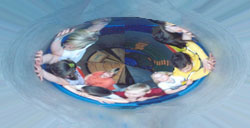Stampoulis Th.1, Leontsini D.1, Avloniti, A.1, Chatzinikolaou A.1, Fatouros I.2, Kambas A.1
1 School of Physical Education and Sport Science, Democritus University of Thrace
2 Department of Physical Education and Sport Science, University of Thessaly
akampas@phyed.duth.gr
Abstract
Purpose of this study was to investigate the gender effect on physical activity (PA) and bone mineral content (BMC) and bone mineral density (BMD) of total body less head (TBLH) and lumbar spine (L1-L4) in tanner stage I greek schoolchildren. PA was measured by ActiGraph GT3X+ accelerometer and Dual-energy X-ray Absoroptiometry (DXA) used to assess BMC and BMD of participants (52 boys, 58 girls, Tanner stage I, aged 7-9 years). Students t-test for independent samples was used to evaluate gender differences. Results showed that there was not any gender difference in BMC and BMD of TBLH and L1-L4, but boys counted significantly more steps/day than girls (11.636±2471.56 vs 9953.71±1638.8, respectively, p<0.001). Only 1/3 of boys and girls met MVPA’s recommendation. In conclusion, boys were more active than girls, but there was no difference in bone status of TBLH and L1-L4 in Tanner stage I of Greek schoolchildren.
Keywords:
prepuberty, bone status, physical activity
Download (pdf, 331kb)






